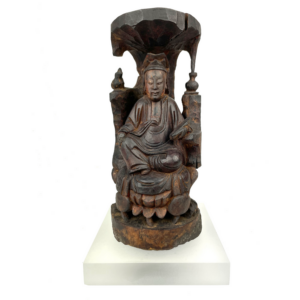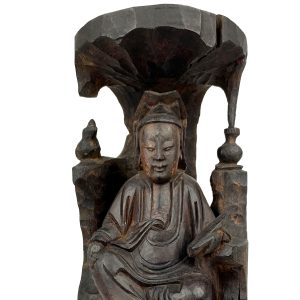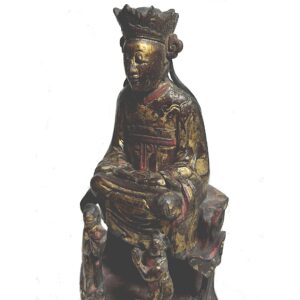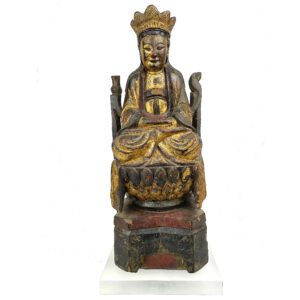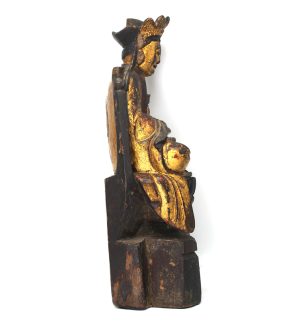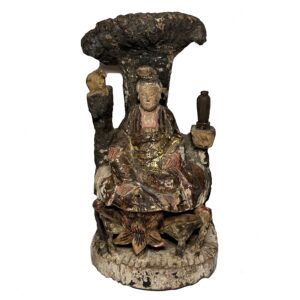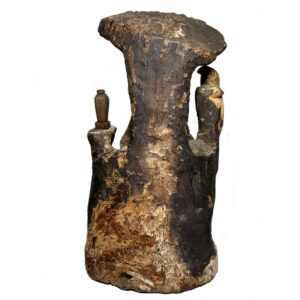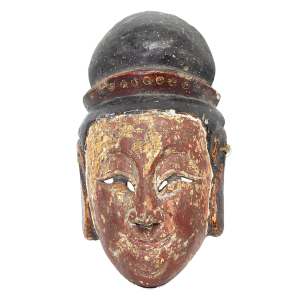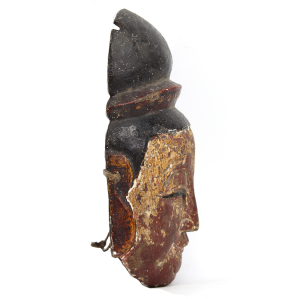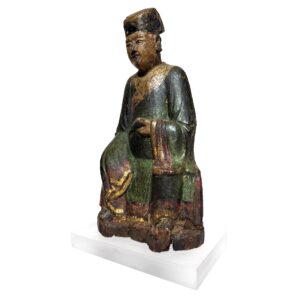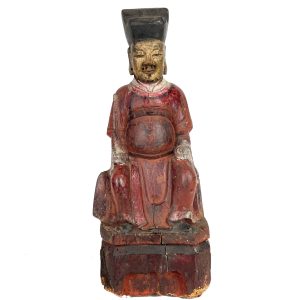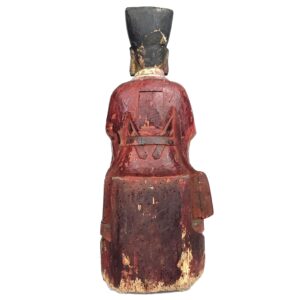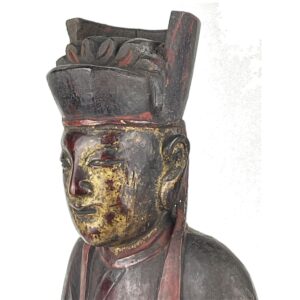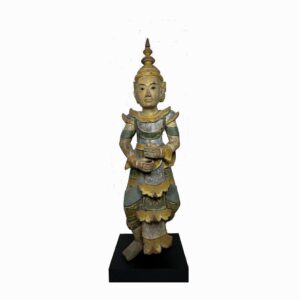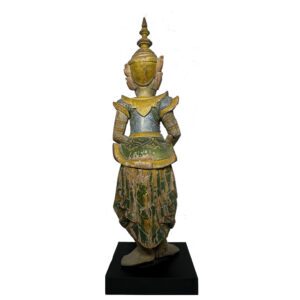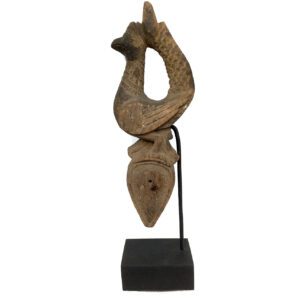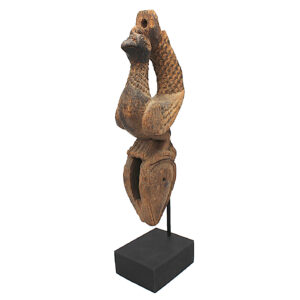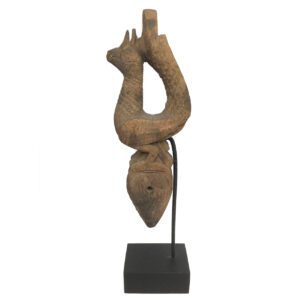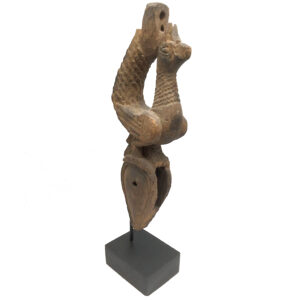Showing 61–72 of 169 results
-
Sale!


$850.00 Original price was: $850.00.$625.00Current price is: $625.00.
H: 9.5 ” D: 4.5″ | FREE SHIPPING WITHIN CONTINENTAL U.S.
Rare provincial white hooded Nanhai Guanyin in Cave below openwork draped moss and barbed rocks holding precious scrolls, with vial and parrot. Open lotuses symbolize her purity and enlightenment, closed lotuses potential for enlightenment of others.
-
Sale!


$1,350.00 Original price was: $1,350.00.$1,200.00Current price is: $1,200.00.
H: 11.5″ W: 6″ D: 4.5″ | FREE SHIPPING IN CONTINENTAL U.S.
Nanhai Guanyin on Mount Putuo sits as a triad with acolytes Shan Tsai hands in prayer and the Dragon Princess offering the “illuminating pearl.” Very rare Ming sculpture on an Acrylic base is one of our favorites VA collection carvings.
-
Sale!


$1,450.00 Original price was: $1,450.00.$1,150.00Current price is: $1,150.00.
H: 15.5″ W: 6″ D: 5.25″ | CALL 213-568-3030 OR EMAIL VANISHINGARTS213@GMAIL/COM for shipping information
Elegant Guanyin in meditation, gilt covered with five-lobed crown. Sacred vial on her right and parrot on left. Guanyins statues with symbols in this condition are rare and impart a feeling of serenity to the environment around them.
-
Sale!


$595.00 Original price was: $595.00.$525.00Current price is: $525.00.
H: 9.75″ W: 5″ D: 4.5″ | FREE SHIPPING within continental u.s.
Nanhai Guanyin in her Cave in lalitsana, below draped moss arch holding a scrolls, next to vial of humanity’s tears and parrot, her constant companion. Small Nanhai images with these symbols are very rare.
-
Sale!


$395.00 Original price was: $395.00.$325.00Current price is: $325.00.
H: 9.25″ W: 5.75″ D: 2.25″ | FREE SHIPPING WITHIN CONTINENTAL U.S.
Chinese Noa opera mask is likely a female zhengshen – a benevolent gods with kind and honest nature and gentle disposition -symbolizing the power of good to defeat evil. Age and heavy use
-
Sale!


$535.00 Original price was: $535.00.$395.00Current price is: $395.00.
H: 10.3″ W: 6″ D: 3.5″ | FREE SHIPPING IN CONTINENTAL US
Ancestor statue emphasizing his status as an official holding up his belt of office with official’s hat and boots, worn only by those who could afford them. Faded inscriptions on the back of the chair. Mounted on Lucite stand.
-
Sale!


$875.00 Original price was: $875.00.$495.00Current price is: $495.00.
H: 15.5″ W: 6.125 ” 4.125 D: ” | FREE SHIPPING WITHIN CONTINENTAL U.S.
Carved ancestor figure as an official sits on a backless chair with a decorative pedestal in official’s attire holding a long slender curved hu-tablet, all signs of his office and status. He is vibrantly painted in red, the color of fu, as a wish for prosperity and status.
-
Sale!


$985.00 Original price was: $985.00.$695.00Current price is: $695.00.
H: 15″ W: 6.5″ D: 5.5″ | EMAIL [email protected] OR CALL 213-568-3030 FOR SHIPPING COST
This excellently carved ancestor civilian official with gilt highlights was commissioned to be place on a home altar for veneration and impress those who viewed it and to honor the venerated ancestor’s persistence, success, status and power.
-
Sale!


$650.00 Original price was: $650.00.$395.00Current price is: $395.00.
H: 7.75” W: 3.5″ D: 3.5″ | FREE SHIPPING within continental U.S.
Rare and charming carved attendant pair to flank deities on circular pedestals presenting boxed offerings with ribbons as wish for longevity.
-
Sale!


$1,200.00 Original price was: $1,200.00.$950.00Current price is: $950.00.
H: 25″ W: 8″ D: 6″ | CALL 213-568-3030 OR EMAIL [email protected] FOR SHIPPING.
Regional Rattanakosin carving of a Thai celestial guardian or attendant originally placed on a home or small temple for protection and devotion. Stylized layered garment, intricate detailing and headdress signify his celestial and royal status.
-
Sale!


$245.00 Original price was: $245.00.$150.00Current price is: $150.00.
H: 13” W: 3.75” D: 2.625” | FREE SHIPPING WITHIN CONTINENTAL U.S.
Burmese teak heddle pulley surmounted by a graceful peacock that symbolizes wholeness, combining colors and fleeting nature of all things. Based on old animistic beliefs, heddles are decorated with auspicious animals providing the weaver protection, assuring good quality weaving and pleasing the gods.
-
Sale!


$245.00 Original price was: $245.00.$150.00Current price is: $150.00.
H: 14″ W: 2.675” D: 3.5” | FREE SHIPPING WITHIN CONTINENTAL U.S.
This elegant heddle pulley carved from a single piece of Burmese teak is topped by a peacock, which in Buddhism represents the short-lived nature of all things. In Burmese animistic traditions, it auspicious animal images protect the weaver, assure quality weaving, and please the gods and spirits. Finely weathered from time and use.
End of content
End of content

